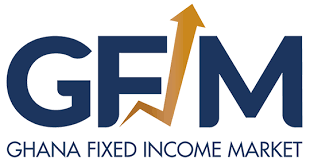Ethiopia’s $8.4 Billion Debt Deal: A Game Changer
Ladies and gentlemen, buckle up! Ethiopia just scored a massive victory in its debt restructuring negotiations. The country has reached an Agreement in Principle (AIP) with its Official Creditor Committee (OCC) on the main financial parameters of a debt treatment under the G20 Common Framework. This deal covers approximately USD 8.4 billion of outstanding public debt. Let’s dive into what this means for Ethiopia and its investors.

The Big Picture
Ethiopia has been in a tough spot, with its debt stock rising sharply to $57.2 billion by 2022. The country’s ambitious Growth and Transformation Plans (GTPs) have driven large-scale infrastructure projects and industrialization, but these efforts have also led to an unsustainable increase in public debt. The debt burden has become a critical issue, amplified by challenges such as political instability, the aftermath of the COVID-19 pandemic, ongoing regional conflicts, and the global repercussions of the Russia-Ukraine war.
The Deal Breakdown
The AIP with the OCC goes a long way in achieving these objectives, with a debt service relief totaling approximately USD 2.5 billion over the period 2023-2028. This significant smoothening of Ethiopia’s external redemption profile with a material reduction of its cost is a game-changer. Ethiopia has committed to negotiate with its external creditors a debt treatment delivering USD 3.5 billion reduction in debt service over the program period, and restoring debt sustainability on an ongoing basis.
The IMF Factor
The IMF’s $3.4 billion financing program, approved in July 2024, has been pivotal in supporting these reforms, including currency liberalization and fiscal adjustments. The IMF’s second review of the arrangement under the Extended Credit Facility (ECF) in January 2025 allowed for an immediate disbursement of about USD 248 million, further supporting the country’s balance of payments needs.
The Challenges Ahead
Despite these positive developments, Ethiopia faces several challenges in managing its debt restructuring process. The complexity of dealing with diverse creditor groups, including both official and private creditors, complicates negotiations. The largest portion of Ethiopia’s foreign debt is owed to China, which has proven to be both a source of assistance and a potential roadblock in negotiations due to differing interests compared to Western creditors.
Another significant hurdle is the political climate in Ethiopia, which has experienced internal conflicts, including the Tigray conflict, which has disrupted economic activity and slowed down growth. The impact of these conflicts on the country’s fiscal health cannot be overstated, as they have led to increased military spending and hindered foreign investments.
The Investor Perspective
For investors, this deal is a double-edged sword. On one hand, the debt relief and financial stability could attract more investments and support economic growth. On the other hand, the risks associated with creditor disputes, economic and political instability, and institutional weaknesses cannot be ignored.
The Bottom Line
Ethiopia’s debt restructuring is a critical step towards economic recovery and growth. The country’s ability to sustainably manage its debt hinges on resolving creditor disputes, implementing institutional reforms, and adhering to IMF-mandated adjustments. While the “final stretch” of negotiations offers hope, long-term stability will require systemic changes to prevent future crises.
So, are you ready to invest in Ethiopia? The time is now! This is a no-brainer for investors looking for high-risk, high-reward opportunities. But remember, the market hates uncertainty, so stay tuned for more updates and be prepared to act fast. BOO-YAH! This stock’s a winner!








